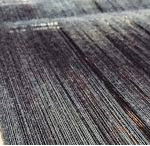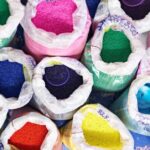The Printing And Dyeing Industry is the textile dyeing and finishing processing industry
There is a significant demand for chemicals that ensure uniform dye distribution, vibrant coloration, and superior color fastness, in addition to various auxiliary agents that facilitate and enhance the dyeing and finishing processes.
These requirements are essential for achieving high-quality textile products with consistent appearance and durability.
RELATED PRODUCTS
Soda Ash Light
Strong alkalinity, can adjust pH value, soften water quality, and participate in chemical reactions

Specific Scenario
Soda ash light desizes cotton fabrics by removing starch slurries, preparing them for dyeing to ensure even color absorption with its highly alkaline and fast-dissolving properties.
Product Function
Soda ash light creates an alkaline environment that causes starch slurry to swell and hydrolyze, facilitating its removal through subsequent washing. Additionally, due to its high solubility, it dissolves rapidly in the desizing bath, ensuring consistent and uniform concentration throughout the solution. This efficient dissolution and reaction help enhance processing stability and maximize desizing effectiveness, leading to improved preparation quality for dyeing.

Specific Scenario
Anhydrous sodium sulfate is utilized in reactive dyeing of cotton and linen to promote dye absorption, improve color fastness, and ensure uniform results. Its high purity guarantees consistently vibrant coloration.
Related Value
Anhydrous sodium sulfate enhances cost-effectiveness in printing and dyeing by improving dye uptake, which reduces dye consumption—particularly in high-concentration dyeing of dark shades like black and navy blue. It ensures excellent color fastness and vibrant results, thereby lowering operational expenses while maintaining quality.
Read our expert analysis on achieving level dyeing with anhydrous sodium sulfate.
Anhydrous sodium sulfate
As a dye promoter, it improves the adsorption rate of dyes on fibers (reduces dye solubility, promotes its transfer to fibers), reduces dye waste, and enhances dyeing uniformity.
FAQ
Neutralize the negative charges on the surface of fibers, reduce the repulsion between dyes and fibers, and improve the dye uptake rate
Risk of one-time addition: pH sudden rise>11.5
Correct operation: Add in 3 times, with a 10 minute interval between each time, and control the pH between 10.5-11.0.
The primary difference is bulk density and particle size. Soda Ash Light has a lower density and finer particles, which gives it a much higher dissolution rate. This is critical in dyeing, as it allows for quick and even distribution in the dye bath, preventing spotting and ensuring uniform pH, which leads to consistent, level dyeing.
By controlling the rate of dye exhaustion. Without an exhausting agent, the dye might attach to the fiber too quickly, leading to uneven coloring (especially on folds or dense fabrics). Anhydrous Sodium Sulfate allows for a more gradual and controlled transfer of dye from the bath to the fiber, resulting in a smooth, level shade.
High purity (≥99%) is essential to avoid side reactions and impurities that can cause:
Spots and Specks: Undissolved impurities from low-grade chemicals can land on fabric.
Inconsistent Results: Varying purity levels lead to unpredictable pH or exhaustion rates.
Metallic Ions: Impurities can complex with dyes, altering the final shade or reducing color fastness.
Have a specific technical question? Contact our experts today for a consultation.
